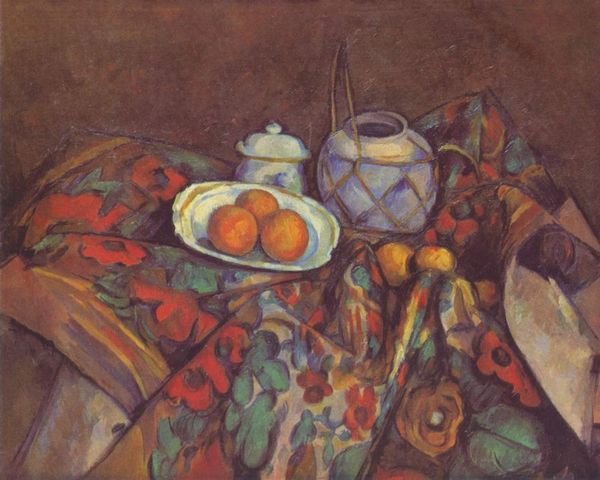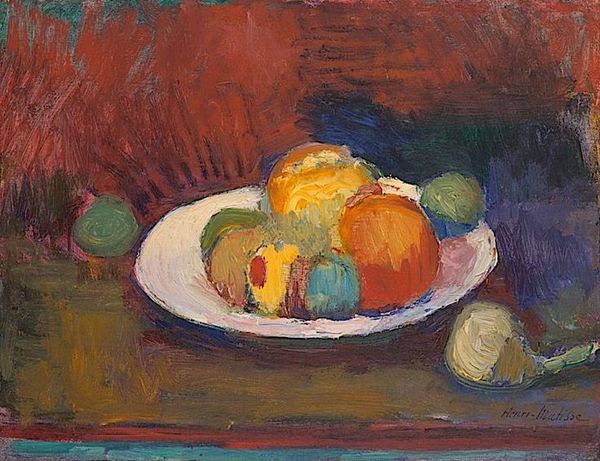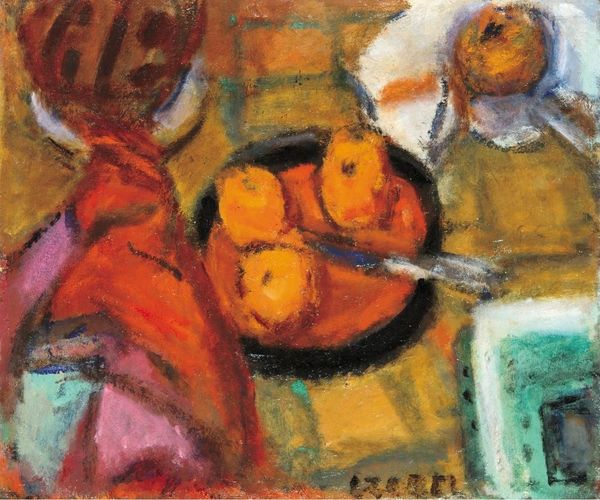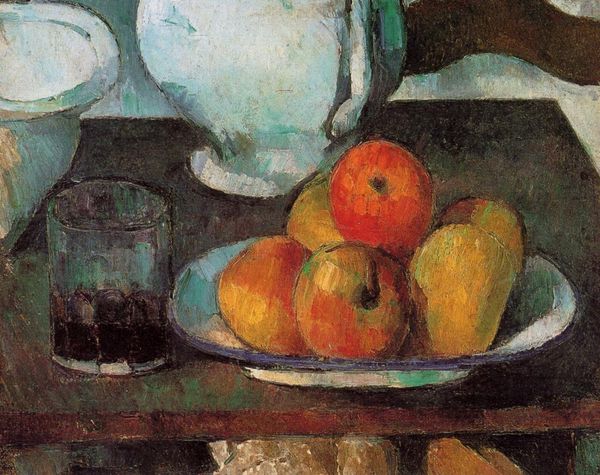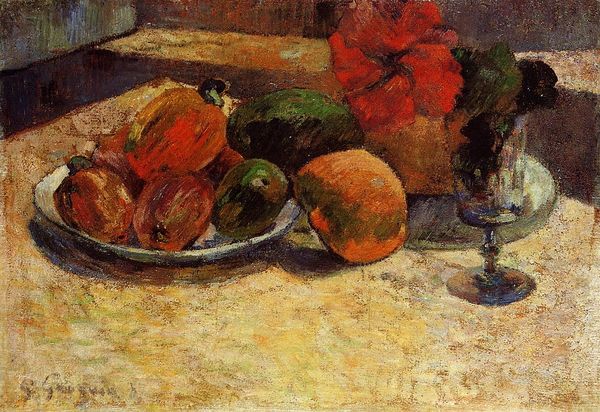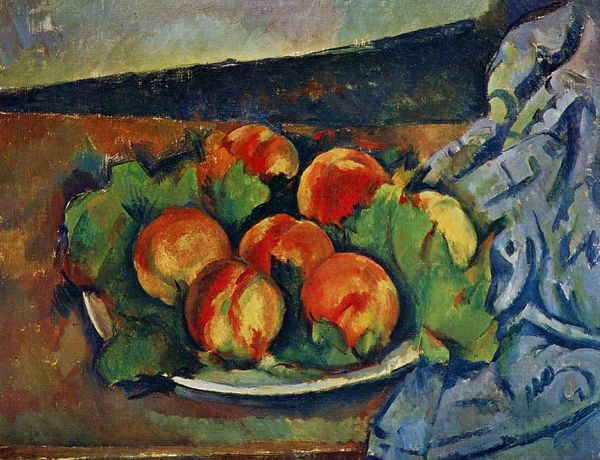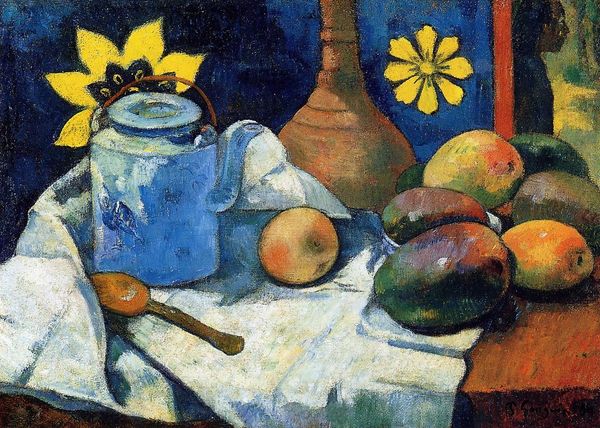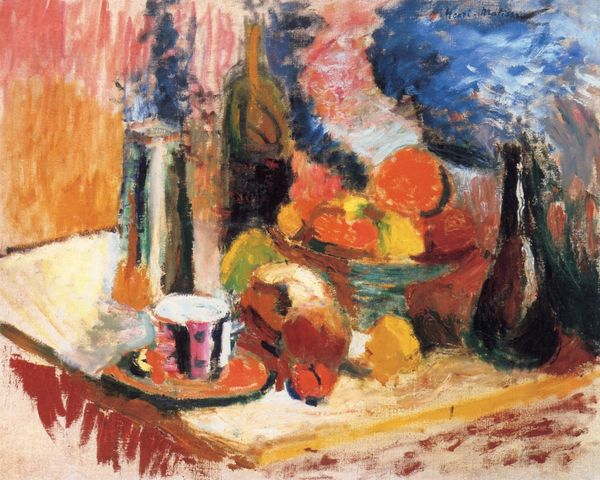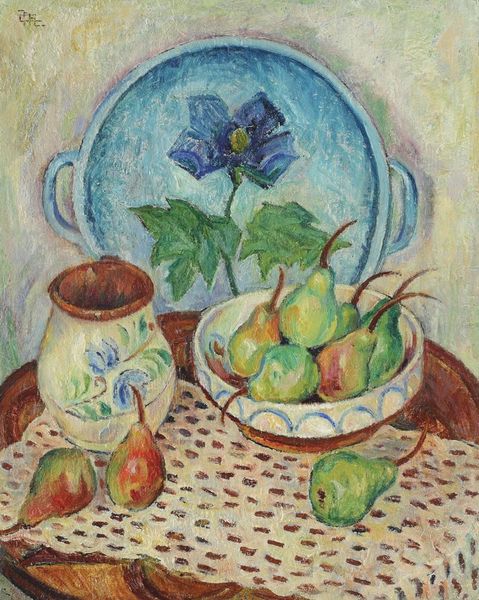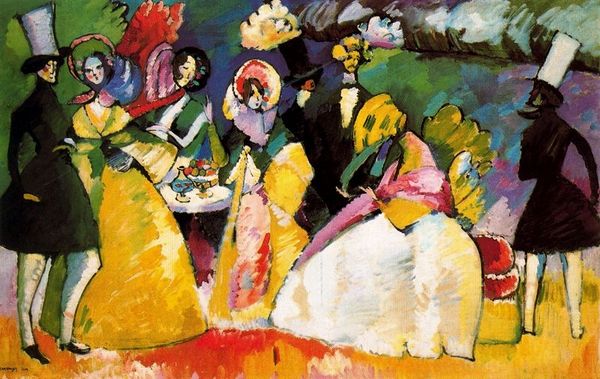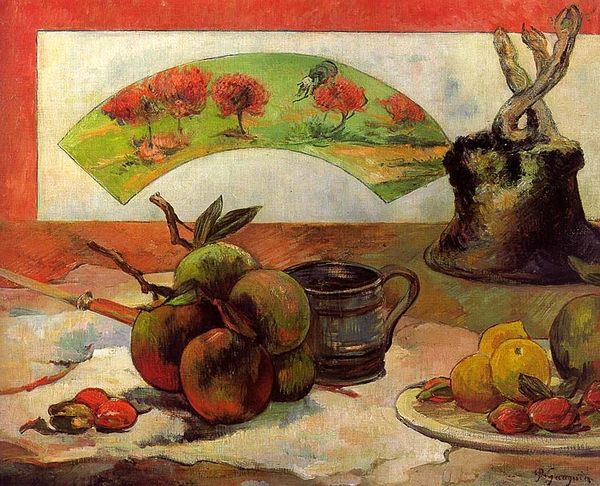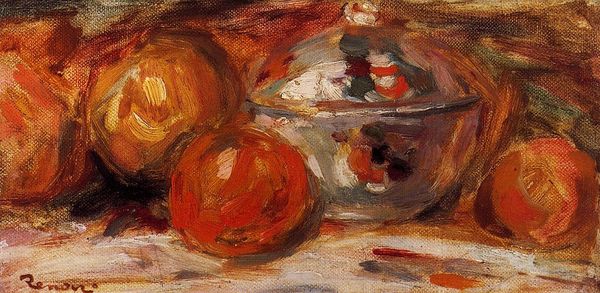
painting, oil-paint
still-life
table
painting
oil-paint
flower
oil painting
fruit
plant
symbolism
post-impressionism
Dimensions: 30.4 x 47.4 cm
Copyright: Public domain
Paul Gauguin, a leading Post-Impressionist painter, created this vibrant still life with mangoes. In the late 19th century, Gauguin sought refuge in French Polynesia from what he perceived as the constraints of European society. Rather than merely depicting fruit, this painting invites questions about cultural exchange and representation. Gauguin was part of a larger colonial context, where Western artists often exoticized non-Western cultures. The mangoes and the local flora become symbols, laden with meaning beyond their simple existence as objects. Gauguin's gaze was filtered through his own experiences and desires, and the painting reflects his complex relationship with the places and people he encountered. "I shut my eyes in order to see," Gauguin once said, highlighting the subjectivity inherent in his artistic vision. This painting is both beautiful and complicated, a reminder of the entangled histories of art, identity, and colonialism. How does Gauguin's personal quest for paradise affect our understanding of the artwork?
Comments
No comments
Be the first to comment and join the conversation on the ultimate creative platform.
